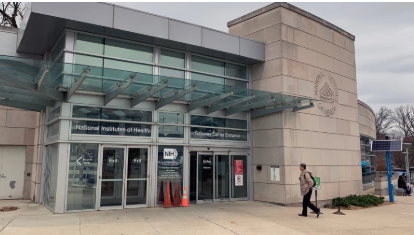Indirect financing for research programs will now only be 15% of total grants, the National Institutes of Health said Friday, reducing funding for research institutes.
The NIH’s Office of Policy for Extramural Research Administration, or OPERA, stated in its announcement that the agency allotted $9 billion of the $35 billion spent on research grants in fiscal year 2023 for indirect costs, which include personnel, operations, maintenance, accounting, and equipment.
The organization that houses the scientist’s work gets an extra proportion for such indirect expenses when the scientist obtains a government NIH funding for a study, say $500,000 annually. The university or research organization and the grantor negotiate such fees.

On one level, the indirect system makes logical. A place’s infrastructure must be supported. Michael Eisen, a biologist at the University of California, Berkeley, stated, “I can’t build a new building every time I get a research grant.” “Janitors, HVAC, and electricity in my lab are not expenses I pay for.”
According to the email, organizations that received NIH money had an average indirect expenses rate of 27% to 28%, although occasionally it may be substantially higher.
According to the memo, OPERA determined the standard indirect rate of 15% by examining the indirect cost rates at a number of private foundations that provide funding for research grants, including the John Templeton Foundation, the Carnegie Corporation of New York, and the Robert Wood Johnson Foundation. These foundations all have maximum indirect cost rates ranging from 10% to 15%.

“The world’s top medical research should be conducted in the United States. As a result, it is crucial to make sure that the majority of funding is allocated to direct scientific research expenses rather than administrative overhead, according to OPERA’s recommendations.
Additionally, the government calculated that limiting indirect expenses to 15% may result in savings of $4 billion.
However, experts from a number of research and higher education institutions quickly noted that reducing indirect costs may harm studies since it would result in less money being allocated for supplies, lab space, and researchers—all of which are seen to be necessary for scientific study.
In a post on X, former Harvard Medical School dean Jeffrey Flier stated, “A rational government would never do this.”
Eisen stated that he thought the indirect financing structure needed to be reexamined since it was complicated and unclear.
I can get the feeling that when one looks at institutions, “the administrations have grown massively, there are deans everywhere, and money is going into this nebulous void.” Why should taxpayers foot the bill for such things?
Eisen said. “With greater transparency and clarity on where the money is going, I would welcome a really careful rethink of how grants are structured, where money goes in a grant, and who is in charge of allocating it.”
Eisen, however, criticized the new NIH guidelines as a “crude” and “poorly thought out” strategy that would place more of the burden of funding research on institutions than the federal government.
It essentially asks, “Why should the government spend money on research when you have all this money, universities, and you spend it on research?” Eisen said. “The majority of colleges lack the resources to intervene and pay for this. It isn’t feasible.
According to Eisen, if the policy stays the same, it will result in fewer biomedical research overall. Research will suffer as a result of this. You may do it this way if you don’t want research to take place,” Eisen said.
“President Trump is doing away with Liberal DEI Deans’ slush fund,” exclaimed Katie Miller, one of President Donald Trump’s appointments to the newly established Department of Government Efficiency, or DOGE, in a post on X. This reduces Harvard’s egregious price gouging by about $250 million annually. Harvard researchers who get NIH funding are accused of having high indirect cost rates.
A new NIH director has not been confirmed by the Senate. Trump selected Stanford University professor Dr. Jay Bhattacharya for the role. His confirmation hearings are still pending.





